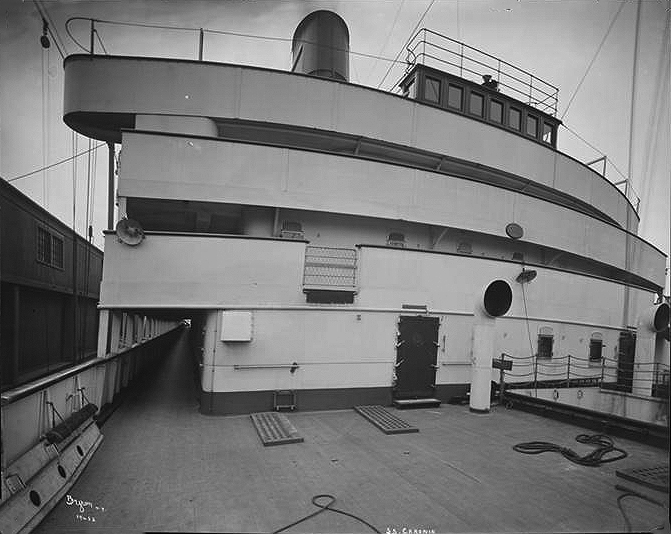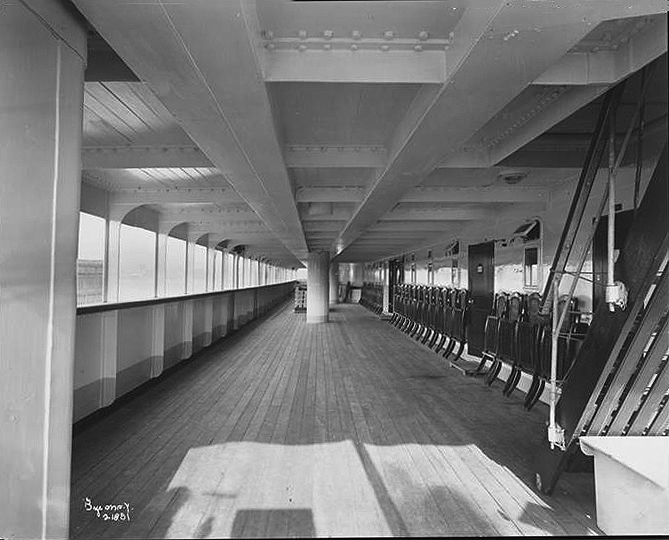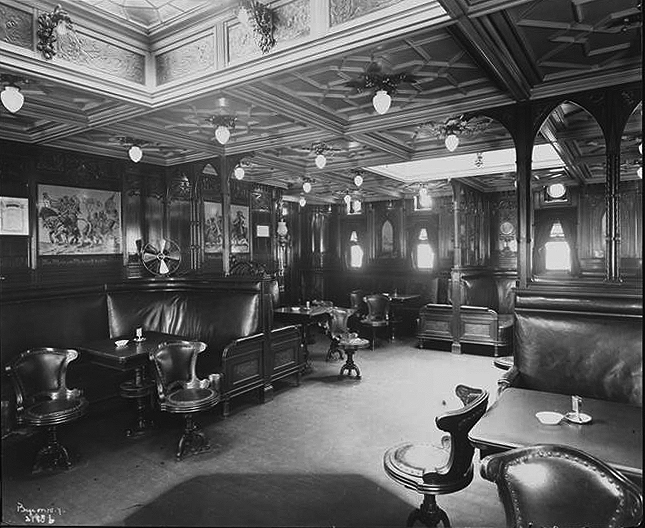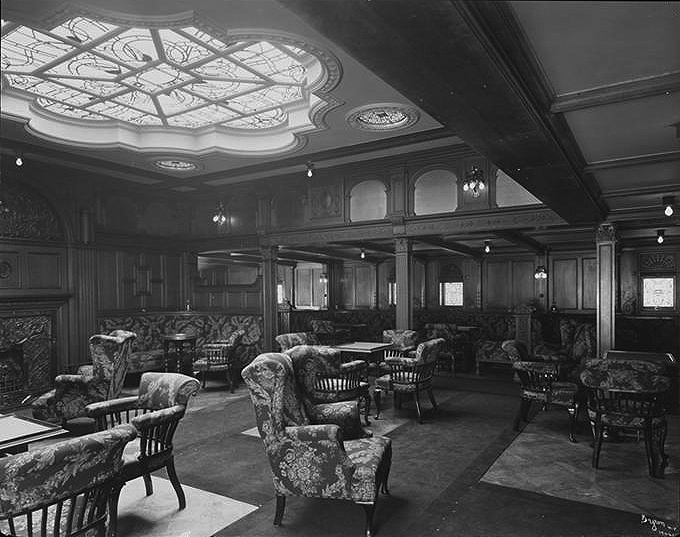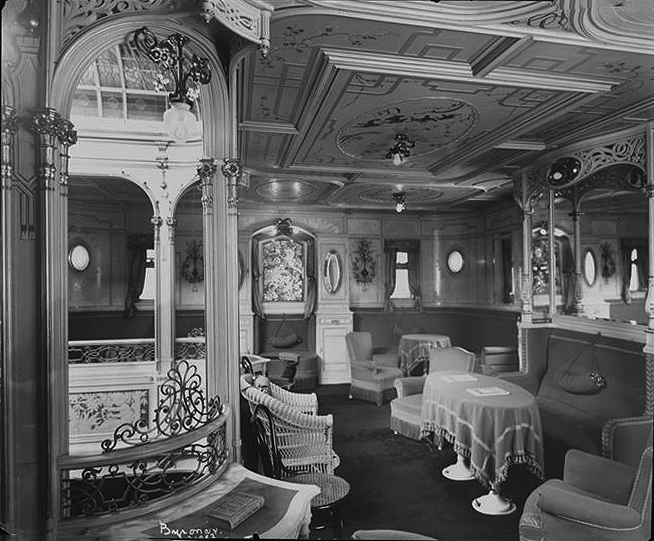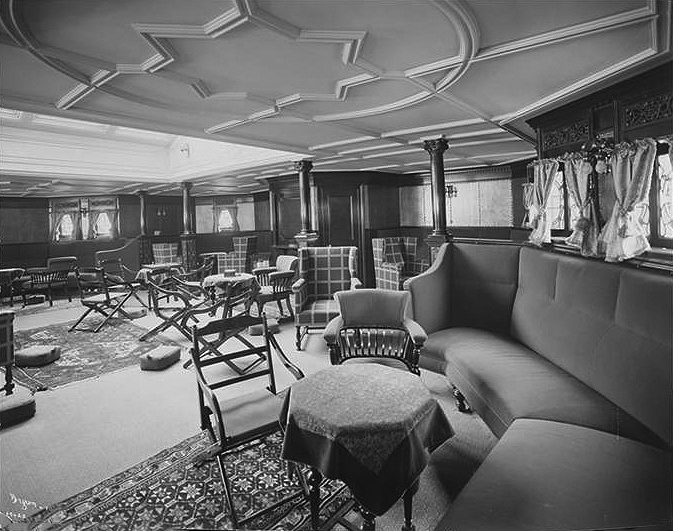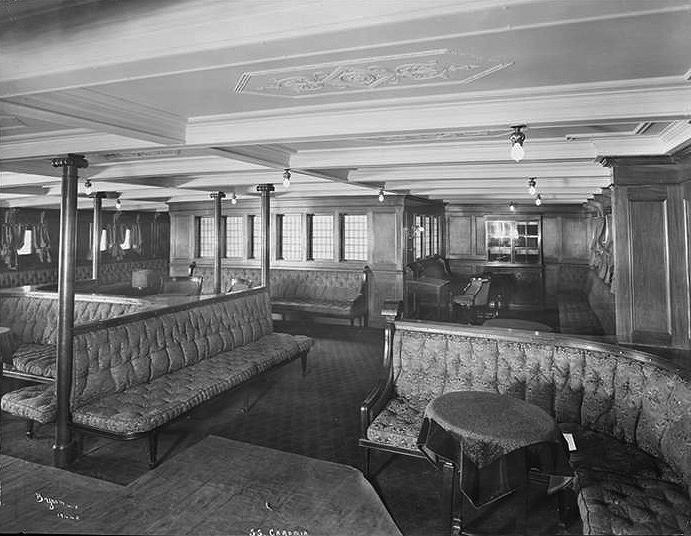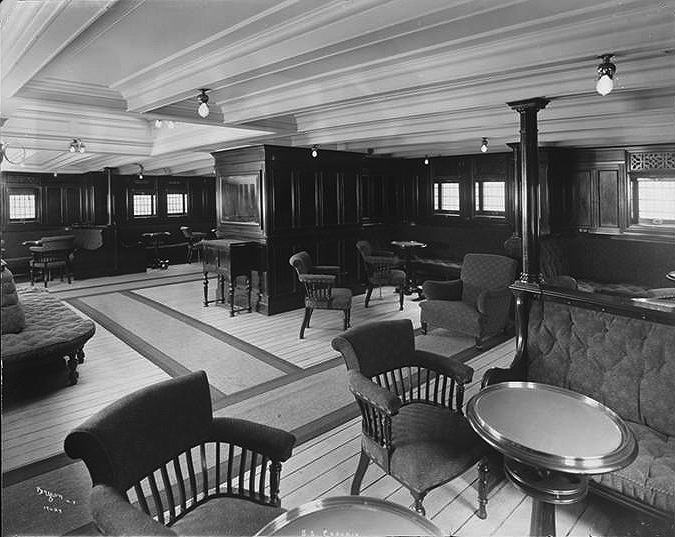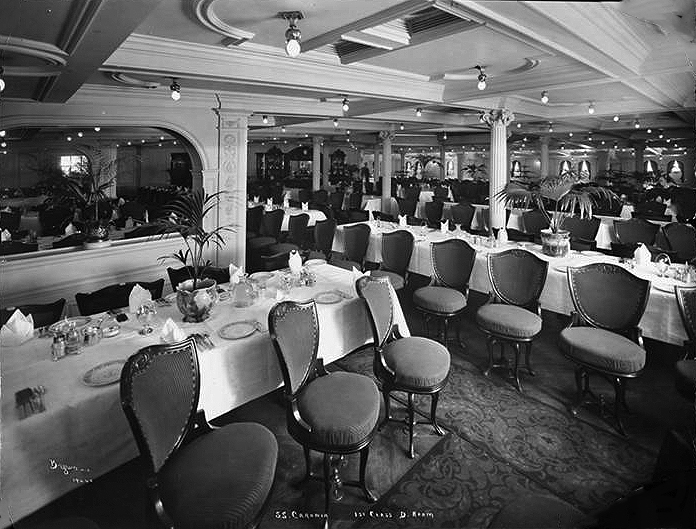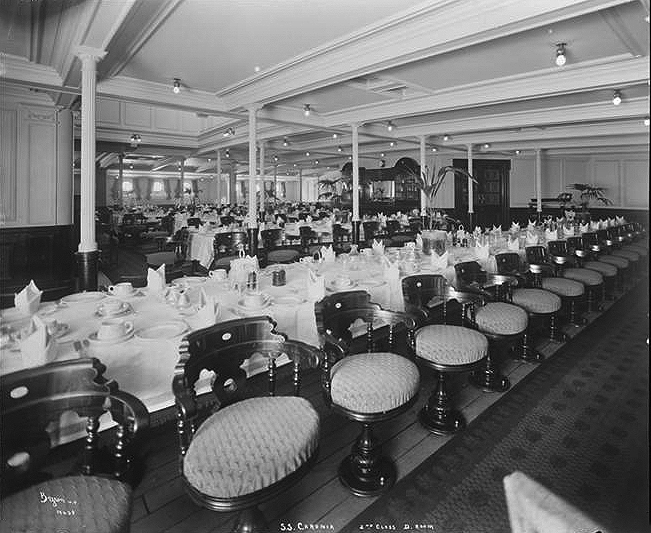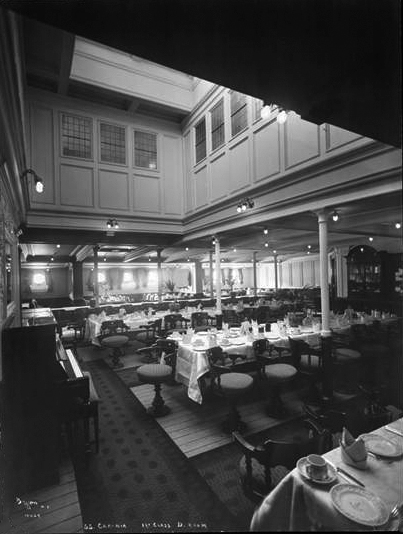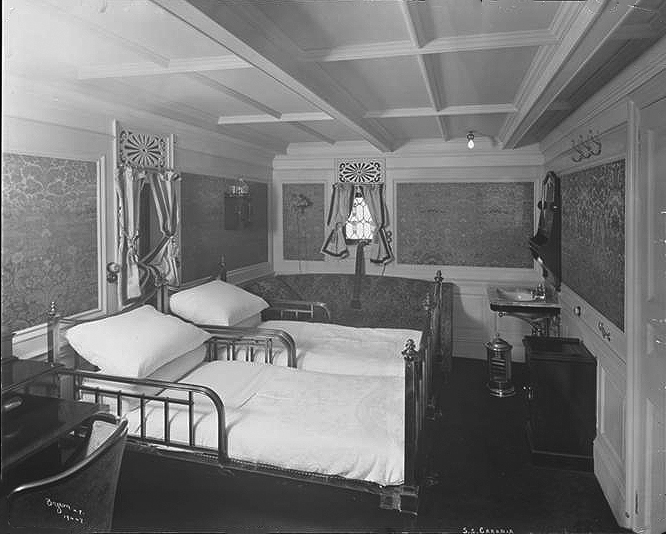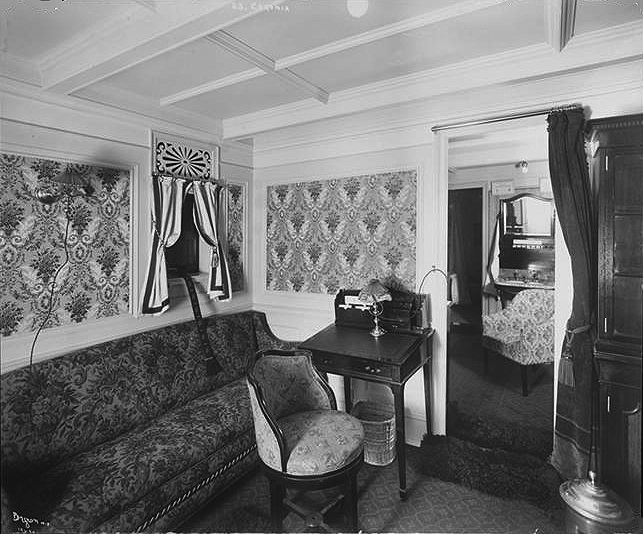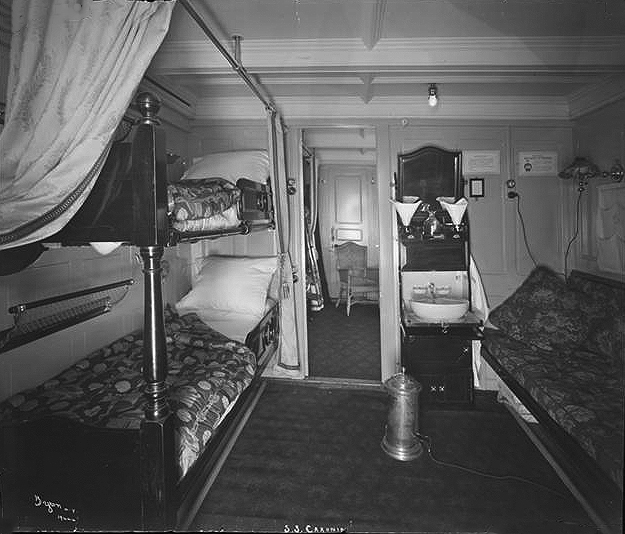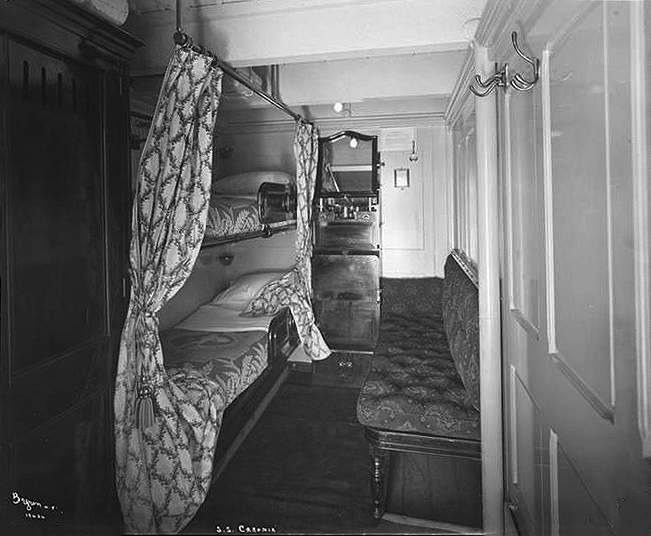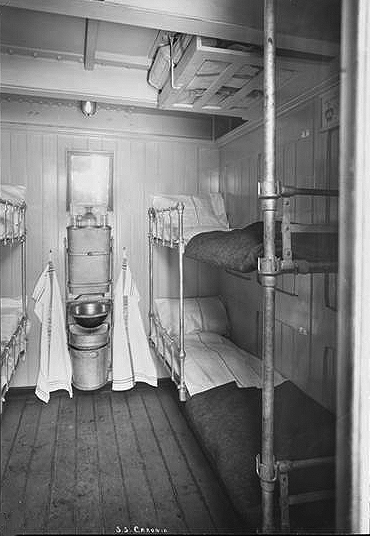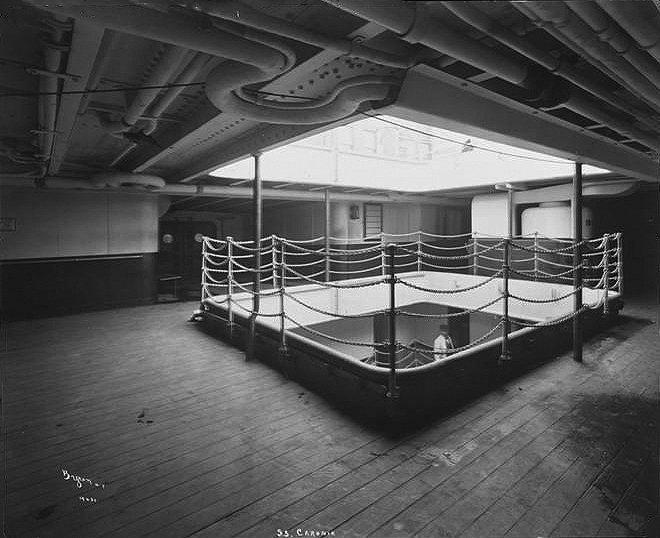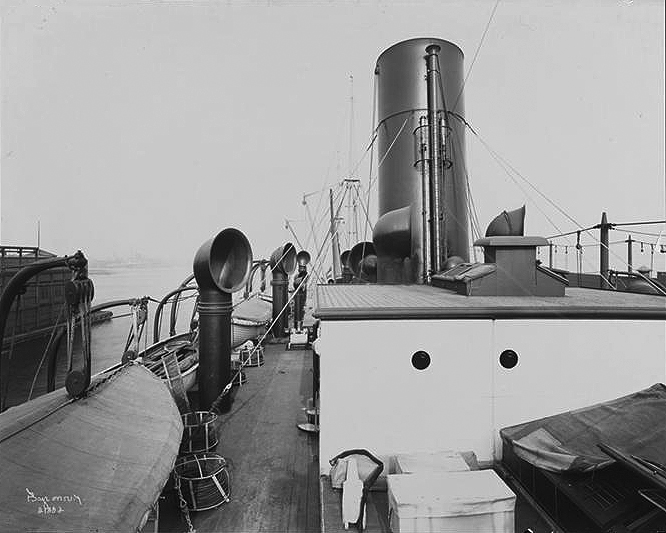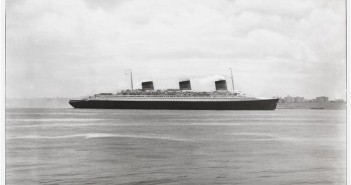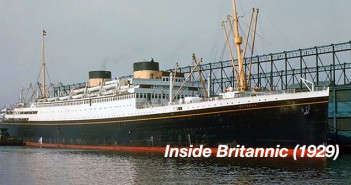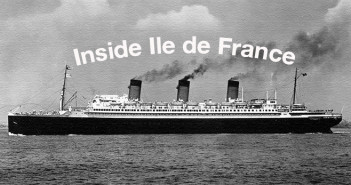The first Caronia was launched in Glasgow on 13 July 1904 at John Brown & Co. According to some sources, Caronia was the only Cunard liner named after an American—Caro Brown, granddaughter of the company’s New York agent. (Caronia (1949) was named after the first Caronia.) Other sources, however, claim that Caronia (1904) was named after the town of Caronia in northern Sicily.
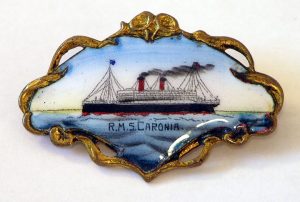
A Caronia 1904) Brooch.
The twin-funnel 19,524 GRT Caronia was 678 feet long and 72 feet at beam. She could carry up to 1,550 passengers
(300 First Class, 350 Second Class and 900 Third Class). Caronia’s steam quadruple-expansion engines drove a pair of propellers at a rated service speed of 18 knots.
Caronia left Liverpool on her maiden voyage for Cunard Line to New York on 25 February 1905. A 1906 cruise from New York to the Mediterranean was the first of many cruises Caronia would make during the coming years. (The name Caronia, incidentally, refers to a town on the Northern coast of Sicily.)
Caronia’s brush with history occurred on the evening of 14 April 1912, when her wireless operator sent the first ice warning (“bergs, growlers and field ice”) to Titanic, the doomed White Star liner.
After briefly serving Cunard’s Liverpool-Boston route in 1914, the start of World War I saw her requisitioned by the Admiralty and transformed into an armed merchant cruiser. In 1916, Caronia was converted into a troopship, and served in that role for the duration, returning to the Liverpool-New York run after the war.
In the 1920s Caronia sailed on several different transatlantic routes while cruising in the off-season. The video above shows Caronia arriving in port (possibly Liverpool) at some time during this era.
The Great Depression, which made so many older ocean liners redundant, killed Caronia. Her final voyage, a westbound transatlantic crossing, began on 12 September 1932, after which she was sold to a scrapper. Caronia was broken up the following year in Osaka, Japan. She was renamed Taiseiyo Maru for her final voyage.
Yet Caronia’s spirit wouldn’t die. Her name would grace two future Cunard Line vessels.
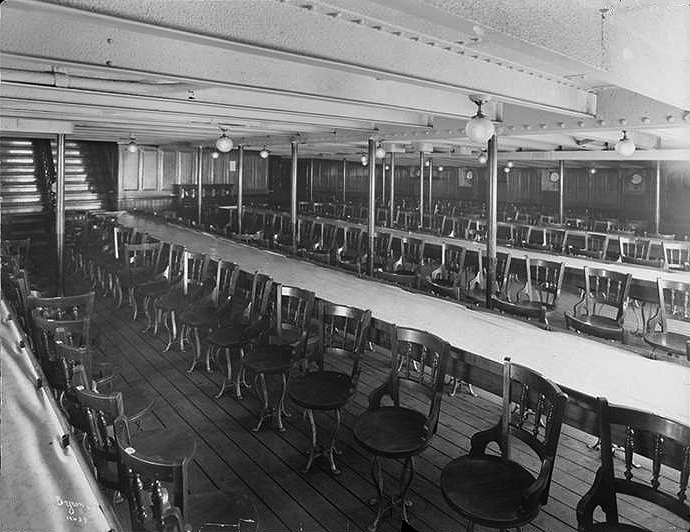
The Third-Class Dining Room.

The Third-Class Smoking Room. The portholes provide ample ventilation, but the seating doesn’t look all that comfortable.
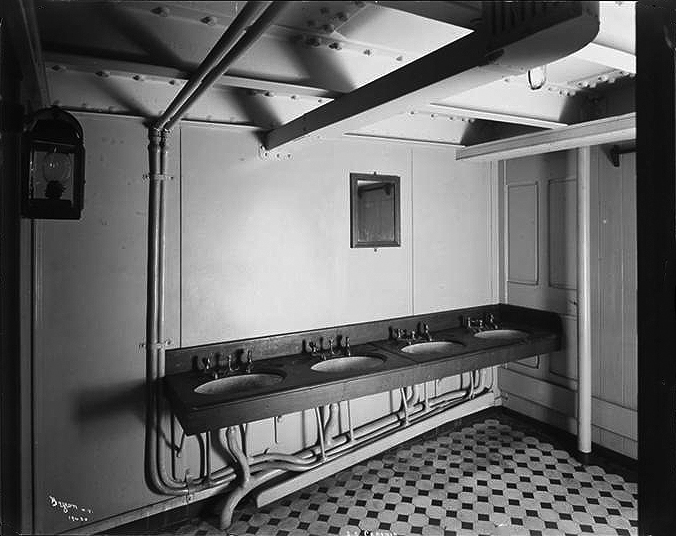
Four sinks, no-waiting in this public bathroom.
Please help keep Ocean Liners Magazine afloat. Any amount will be greatly appreciated. Think of it like tipping your history steward.
—Regards, John Edwards, Editor/Publisher.


